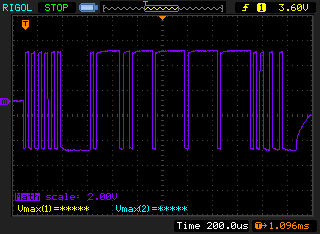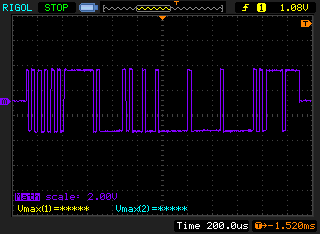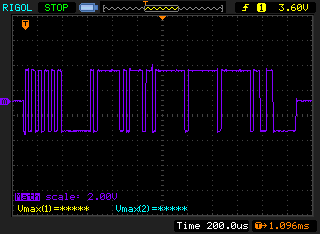RS-485 bus grounding and termination seems like a magical ritual. Some people get lazy with the details of termination because buses often work even when termination is done incorrectly.
I had some untwisted, shielded AWG22 lying around, so I used it to show a quick comparison between bus wiring in a controlled environment. I used a single MS/TP BACnet controller and 120 Ω termination resistors. The cable is of inconsequential length and I don’t have any weird equipment near my desk, so the electromagnetic noise should be minimal. Some would say you don’t even need termination for this length.
Shielded, Grounded Reference, No End-of-line Termination

This is with a single controller and a tiny cable length. The only effects we see with a lack of end-of-line termination is higher amplitude signals (~7V peak to peak) and capacitance in the cable resisting voltage changes as you can see at any of the “corners” that get rounded off. For RS-485 without termination, there’s much less “gravity” pulling the signal back to ground.
Shielded, No Reference, Terminated Shielded

Grounded Reference, Terminated

The terminated version of the same waveform is shown above in two versions: with RS-485 grounding and no reference. Peak-to-peak amplitude is about 4.5 V. Strangely, it looks like there might be more noise in the example with the grounded reference which is not all that implausible considering there are no big noise sources around besides the ancient electrical system in this building. It’s not a big enough difference to take seriously, though.
Note that the waveform is inverted – that’s just because I had the probes the other way. Sorry about that!
Please note that this is a simple look on a desk in a residential area. All of the important things to do with RS-485 buses really show up in larger systems with real electromagnetic noise. The lack of noise in these captures is not similar to real-world applications. I wanted to have this as a baseline for reference. If you want to see what happens when you don’t ground your bus when you need to, check out this post!